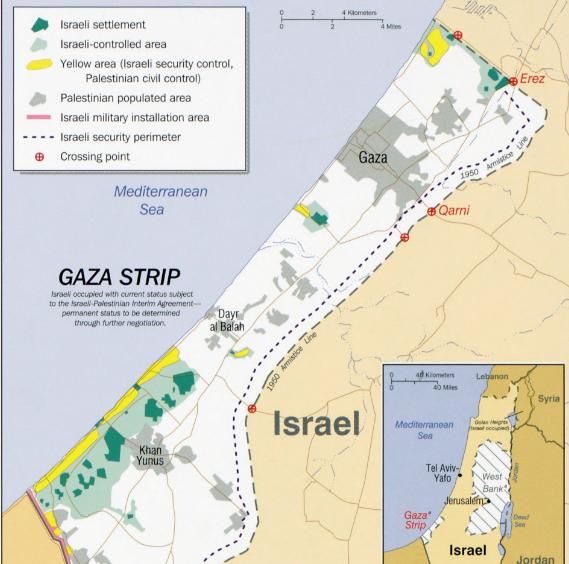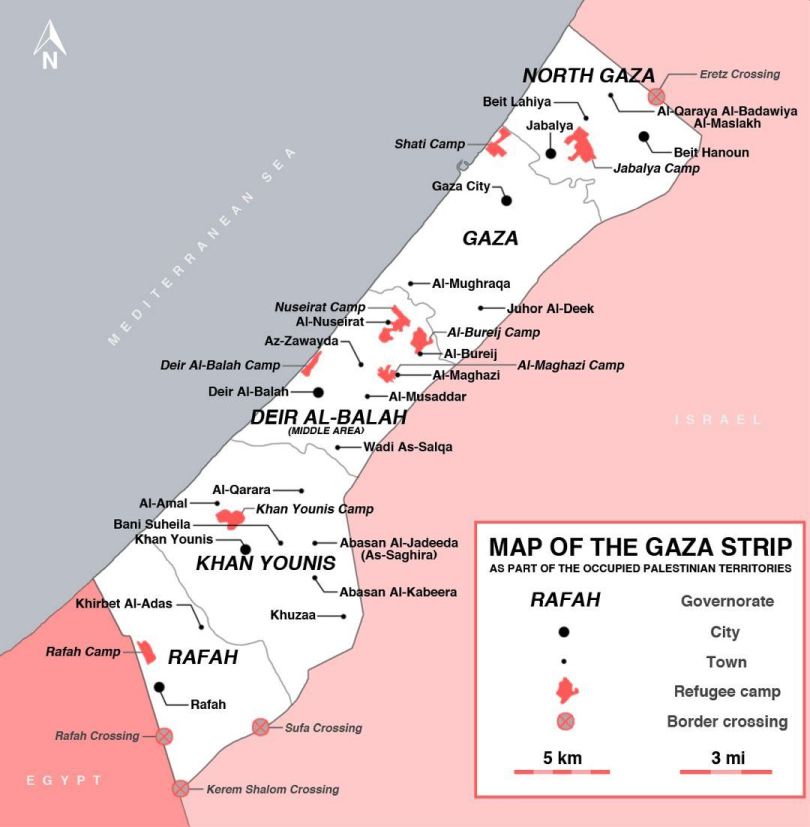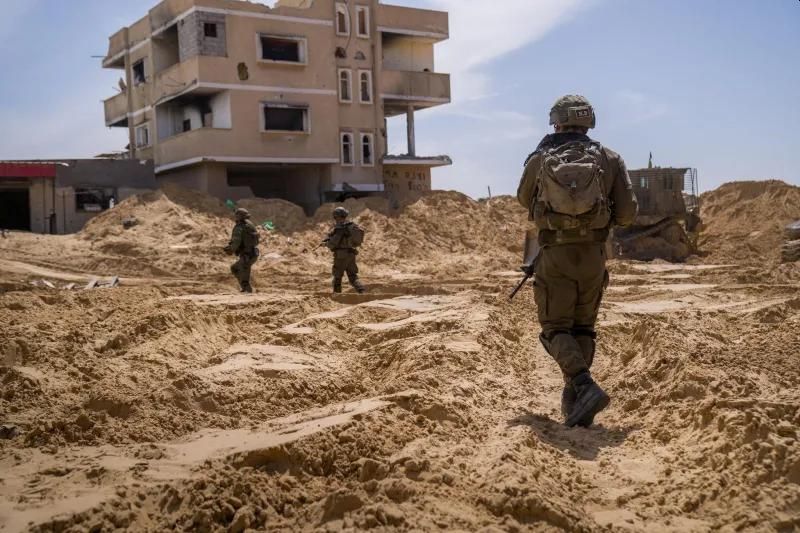By Eric Vandenbroeck and co-workers
The Forever War in Gaza
Less than two months
after he committed to a phased cease-fire with Hamas, Israeli Prime Minister
Benjamin Netanyahu resumed his country’s war in the Gaza Strip. On March 18,
Israeli air force jets attacked military sites, killing more than 400
Palestinians, including over 300 women and children, according to Gaza’s
Hamas-controlled Ministry of Health—a devastating toll even by the war’s
earlier standards. The short-lived truce allowed for the release of 30 hostages
Hamas took during its shock attack on Israel on October
7, 2023, as well as the repatriation of eight deceased captives. Last week,
the Israeli government proposed resuming a cease-fire in exchange for the
return of 11 more hostages and 16 more bodies.
However even if Hamas and Israel hammer out a new, short-term
agreement to halt hostilities, Gaza is unlikely to see real peace any time
soon. Since the horrific October 7 massacre, which claimed the lives of around
1,250 Israelis, Netanyahu has pursued two goals with his military operations in
the strip—free all the hostages and destroy Hamas. But these goals cannot be
achieved at the same time: Hamas refuses to subscribe to a peace process that
involves its own annihilation, and as long as Israel
is committed to that outcome, Hamas’s surviving leaders have a powerful
incentive to hold on to hostages to deter Israeli attacks that might kill them.
This means that even
if a cease-fire resumes, Hamas is likely to delay releasing every
last hostage, Israel is likely to find ways to avoid proceeding through
phases that allow Hamas to retain power, and any deal may again fall apart at
its final stages. Netanyahu increasingly believes that ordering military action
pays off. Projecting strength, after all, weakened Iran and hobbled its
Lebanese proxy militia, Hezbollah. And whereas former U.S. President Joe
Biden’s team tried to contain Israeli escalations, Netanyahu has a more
permissive ally in President Donald Trump. In a sign of the two leaders’
intimacy—and the importance, for Netanyahu, of keeping Trump on side—the
Israeli prime minister rushed to Washington on Sunday to see Trump for the
second time in three months. Feeling emboldened, the Israeli military has also
proposed a far-reaching plan to reoccupy Gaza, and Netanyahu’s ultra-right-wing
partners are more brazenly advancing a proposal to expel most of Gaza’s
inhabitants.
It remains somewhat
unclear, however, whether Netanyahu is prepared to implement his political
partners’ biggest dreams. He has to consider Trump’s
position, changeable as it is, and whether Israel’s military is capable of
embarking on a costly, long-term operation in Gaza. For the time being, his
best option is probably to pursue a middle path that keeps his options open and
maintains his allies’ belief that he is on their side—and that middle path involves continued operations in Gaza.
Confidence Game
When Israel went to
war in Gaza 18 months ago, there was almost unanimous agreement among Israelis
that Hamas must be eliminated. But it soon became clear that Israel’s two
military objectives—secure the release of the hostages and destroy Hamas—could
not be accomplished in the same time frame. Even assuming that it is possible
to eradicate Hamas, a terrorist guerrilla organization that still commands
substantial grassroots support in Gaza, doing so would take years. The Israeli
hostages, however, do not have that kind of time. According to an analysis
by The New York Times, between October 2023 and early March 2025, 41
hostages died in captivity. Some died from starvation, disease, and murder, and
others perished accidentally as a result of Israeli
military operations. Those hostages who have returned to Israel from Gaza in
recent months described being held in extremely harsh conditions: many were
kept chained in tunnels with little food and no medical care and some reported
experiencing torture.
Because Israel did
not clearly prioritize one goal over the other, it has yet to achieve either
one. Since the war began, Israel has killed most of Hamas’s top leaders,
including the group’s Gaza chief, Yahya Sinwar. But the organization still has
a governance structure, and to discourage Israeli attempts to assassinate them,
its remaining leaders seek to maintain a human shield—a kind of insurance
policy—in the form of a small number of hostages, mostly soldiers. Such an
arrangement is unacceptable to Netanyahu. For him, only two options are on the
table: Hamas’s total surrender and the expulsion of its leadership from Gaza,
or the continuation of the war until the Israeli military achieves that same
outcome. In the second scenario, he would likely blame Hamas for the deaths of
additional hostages.
Any hope that the
United States would push Israel to stick to a lasting cease-fire faded with
Trump’s inauguration. Although Trump did pressure Netanyahu to agree to the
January cease-fire, since then, his administration’s approach has become more
muddled. Every few days, the American team presents new proposals, but the
discussions remain deadlocked; Trump now toggles between disinterest in the
conflict and fantastical ideas, such as his proposition in February that the
United States could take ownership of Gaza
and turn it into a tourist “Riviera.”

The Trump
administration has not really faced or sought to resolve the fundamental
contradiction delaying serious peace talks: Netanyahu insists that any
cease-fire process must end in the dismantling of Hamas. But this a redline
that Hamas is unwilling to cross, although it reportedly may consider
abdicating its political power while maintaining its military strength, a kind
of compromise being tested in Lebanon with Hezbollah’s consent. Neither the
Americans nor the Arab mediators from Egypt and Qatar, however, have so far
managed to persuade Hamas’s leaders to sign an agreement that would end their
ultimate political mission: to take control of the Palestinian struggle against
Israel.
Other developments
have made it less urgent for Netanyahu to seek a settlement. By now, Israel’s
military has partially recovered from the shock of October 7. Hamas’s abilities
to organize another large-scale attack or launch significant rocket barrages into
Israeli territory have been degraded. On other fronts, Israel now holds the
upper hand. Last November, Hezbollah was forced to agree to a humiliating
cease-fire, and although the Israeli air force continues to strike the group’s
targets in southern Lebanon (and, last week, in Beirut), the battered
organization has yet to respond. Israel’s exchanges of fire with Iran last
October were an embarrassment for Tehran. And following the collapse of Bashar
al-Assad’s regime in December, Israel took control of parts of southern Syria.
On the back of these wins, Netanyahu seems emboldened, responding with military
force to enemy provocations he would previously have preferred to contain or
ignore. In mid-March, for instance, after six rockets landed in its territory,
Israel bombed a Hezbollah drone warehouse in southern Beirut, even though it
remains unclear who launched the rockets.
Although the Biden
administration stood by Israel after October 7 and helped prevent further
regional escalation, it also sought to contain Israeli military actions. For
instance, after the Israel Defense Forces (IDF) invaded the southern Gazan city
of Rafah last May—an act Biden’s team had cautioned against—Biden delayed
sending heavy precision munitions and bulldozers to Israel. Trump’s accession
to the White House has removed this counterbalance. Publicly, at least, Trump
supports all of Israel’s actions. And more broadly, the way that he flirts with
ideas such as absorbing Canada and annexing Greenland legitimizes the notion
that strong countries can simply seize territory from their neighbors. When
Netanyahu visited Trump in Washington in February, the U.S. president wondered
aloud why Israel did not take advantage of Assad’s ouster to claim even more
Syrian land. Netanyahu subsequently discussed such an idea with his cabinet,
although it has not gained traction.

Hidden Fissures
Israel appears to be
in a commanding position. Indeed, in mid-March, the military presented an
ambitious plan to the government to redeploy several divisions into Gaza,
conduct a new reserve mobilization, evict northern Gazans back to a shelter
zone in the south, and complete a military occupation of the entire strip—all
in the space of a few months. The IDF’s former chief of staff, Herzi Halevi,
had fiercely opposed the creation of any Israeli military government in Gaza.
But he resigned in early March. His successor, Eyal Zamir—who enjoys warmer
relations with Israel’s political leaders and thus more freedom to pursue his
plans—has indicated he is open to governing the strip.
The Trump
administration may have ceased talking about a plan to clear Gaza of its
inhabitants, but right-wing Israeli politicians have taken up the cause,
interpreting Trump’s proposal as a permission slip to more openly discuss
encouraging Gazans to emigrate voluntarily. In practice, any such “voluntary
emigration” project would involve the use of significant military force to
persuade residents to leave. Israeli Defense Minister Israel Katz, who is
essentially Netanyahu’s puppet, has established a new administrative body in
his ministry to promote emigration.
But deeper weaknesses
and domestic tensions constrain the Israeli government. Despite the blows it
has suffered, Hamas remains far from defeated. Two surviving
military commanders, Izz al-Din al-Haddad and Mohammed Sinwar (Yahya Sinwar’s
brother), are leading its efforts to recover. The multiweek cease-fire
that began in January, which facilitated the delivery of more humanitarian aid
into Gaza, also allowed Hamas to replenish funds by seizing some of that aid
and selling it to Gazan civilians for profit. Israel has estimated that, in
recent months, Hamas has recruited about 20,000 new fighters, and the group’s
leaders are moving to suppress protests against its
rule in northern Gaza. Hamas is repurposing Israeli bombs that failed to
detonate to booby-trap buildings and roads in preparation for another Israeli
invasion.

Reoccupying Gaza
would result in additional military casualties and, quite possibly, the deaths
of more hostages. According to myriad public opinion polls, about 70 percent of
Israelis support a deal with Hamas to release all the remaining hostages, even
if it comes with very high costs, such as ending Israel’s military operations
in Gaza and releasing thousands of Palestinian prisoners from Israeli jails.
But it is not certain whether this public sentiment will translate to the kind
of protest that could constrain Netanyahu’s options. Many Israelis still find
it extremely hard to demonstrate against their government while Israeli
soldiers are fighting and dying in Gaza.
But implementing
either the military plan to occupy Gaza or the “voluntary emigration”
project will carry serious political risk. Tens of thousands of military
reservists have already served hundreds of days each during the war, which has
taken a heavy toll on their careers and families. Israel has, in fact, never
faced so much ambivalence about military service on the part of its
reservists—not even during its politically controversial 1982 war in Lebanon or
during the second intifada, which lasted from 2000 to 2006. Some are
threatening to refuse a call-up because they fear that a sweeping new military
campaign could result in the deaths of more hostages. According to several IDF
commanders I spoke with, many more are considering evading service to remain
with their families. Some reservists’ anger relates to the government’s conduct
outside Gaza, such as its efforts to preserve the ultra-Orthodox exemption from
mandatory military service. But mainly, Israel’s reservists are exhausted and burned out.

So, Netanyahu must
keep performing a delicate balancing act. From his perspective, he must delay
the implementation of any cease-fire that would end the war and foreclose the
fantasy of restoring Israeli settlements in Gaza to satisfy his right-wing
allies. But he cannot sound as decisive as these allies do on fully reoccupying
Gaza and resettling Israelis there. So far, he has been fairly
successful: the Israeli parliament’s passage, in late March, of a budget
bill staved off the threat that his coalition could collapse, forcing an early
election. But one recent cabinet meeting revealed how challenging it is to
maintain this balance. After Netanyahu had commented that the government was
considering various ideas for Gaza’s future, including transferring control to
a consortium of Arab states, the far-right minister for settlements, Orit
Strook, was outraged. “But Gaza is ours, part of the land of Israel,” she
exclaimed. “Are you going to give it to the Arabs?” The prime minister evaded
the question. “Maybe military governance—there are all kinds of options,” he
replied.
The Israeli prime
minister must not only maneuver between a public that demands the release of
the remaining hostages and his political partners’ visions of grandeur. He must
also deal with Trump’s instinct to pursue glory. The U.S. president may still be
seeking his own grand plan: a U.S.-Saudi megadeal that includes the
normalization of diplomatic ties between Israel and Saudi Arabia as well as an
end to the war in Gaza. Netanyahu is now facing a new scandal after two of his
media advisers were arrested and questioned about money they may have illicitly
accepted from the Qatari government. The Israeli prime minister, however,
is nothing if not resilient. He intends to retain his job by any means
necessary. Keeping the Gaza war simmering is the simplest way to do that, no
matter the long-term cost to the hostages, the Palestinians, the Middle East,
and Israel itself.
For updates click hompage here